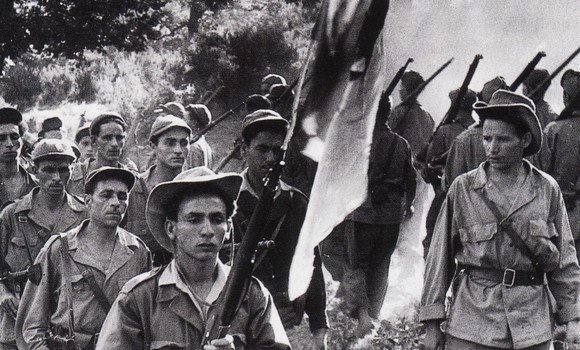Or how to draw the values of national unity from key historical events
Algeria celebrates, today, The National Mujahid Day marking the double anniversary of the Nord-Constantinois offensive and the Soummam Congress (August 20, 1955-1956), in the context of national efforts to close ranks in drawing the values of national cohesion and unity from the history of the liberation struggle and its key events.
Indeed, the President of the Republic, Mr. Abdelmadjid Tebboune, has insisted on many occasions on the strengthening of national cohesion and the need for all national forces to defend the interests of the country, its sovereignty and the independence of his decision to win the battle for renewal at this crucial stage in the country’s history.
During his recent interview with representatives of the national press, President Tebboune also called on Algerians to defend national unity and to strengthen the internal front, saying that he supports any national initiative in this direction, provided that the denominators of the actors are national unity and the November 1 Declaration, which calls for the construction of a sovereign democratic and social State.
In a message on the eve of the celebration of the 61st anniversary of Independence and Youth Day, the President of the Republic also stressed the importance of drawing inspiration from the different historical stages of the liberation struggle to take awareness of the scope and nobility of the efforts expected of everyone, at all levels and in all positions, to take up the challenge of the transition to new modes of thinking and management adapted to our times.
Among the pivotal stages in the history of the Nation which should be inspired are the offensive of Nord-Constantinois and the Soummam Congress, which testify to the great deeds of a generation of freedom-loving patriots who decided to take charge of their destiny, thus sowing the values of freedom and dignity.
These two key events contributed to the internationalization of the Algerian question and to the organization and structuring of the military and political struggle.
Led on August 20, 1955, the Nord-Constantinois offensive made it possible to resound the voice of the Algerian people who refused to submit to the French colonizer, which resulted in the inscription of the Algerian question, in September 1955, on the agenda of the General Assembly of the United Nations as a question of decolonization and not an internal matter as presented by colonial France.
Ten months after the outbreak of the Revolution, Zighoud Youcef, head of Zone II (Northern Constantine) and his deputy, Lakhdar Bentobal, decided to carry out a major offensive against colonial targets in this region, which mainly included towns of Constantine, Guelma, Skikda and Collo.
During this offensive, thousands of fellahin participated alongside National Liberation Army (ALN) fighters in attacks on police stations, gendarmerie barracks, public buildings and settler-owned facilities.
The objective was to loosen the grip on several regions, in particular the Aures, besieged by the colonial army since the outbreak of the National Liberation War and whose population was the victim of a bloody campaign of repression, having caused nearly of 12,000 martyrs among defenseless Algerian civilians.
The Nord-Constantinois offensive marked a major turning point in the armed struggle, by confirming the popular nature of the Revolution and by contributing to the rallying of the middle classes and political leaders, of all tendencies, to the ranks of the Revolution.
Indeed, from August 20, 1955, the Revolution took a real momentum which will be confirmed during the Congress of the Soummam with its structuring and its organization.
The Congress resulted in historic decisions, including the replacement of the five zones, in force since November 1, 1954, by six wilayas (Aurès-Nememcha, Nord-Constantinois, Kabylie, Algérois, Oranie and Sud) subdivided into zones, regions and sectors.
Another emblematic decision of the Congress of the Soummam, the unification of the ALN on a national scale in its structure, its ranks and its organization in the image of a regular army.
The Congress also made it possible to structure the National Revolution militarily and politically, by enshrining the primacy of the political over the military and by prioritizing the interior over the exterior.
Translated from : https://www.aps.dz/algerie/159349-journee-nationale-du-moudjahid-puiser-les-valeurs-d-unite-nationale-dans-les-evenements-historiques-phares





